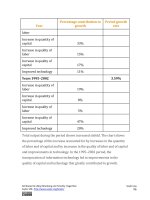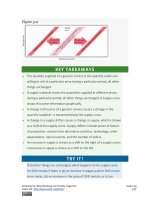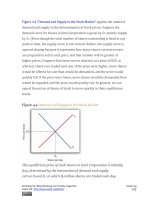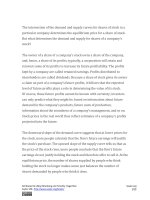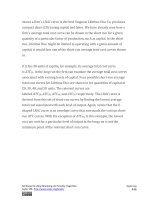Authors libby rittenberg 477
Bạn đang xem bản rút gọn của tài liệu. Xem và tải ngay bản đầy đủ của tài liệu tại đây (448.3 KB, 1 trang )
line at the market price, as shown in Panel (b). There is a different
marginal revenue curve for each price.
Price, Marginal Revenue, and Average Revenue
The slope of a total revenue curve is particularly important. It equals the
change in the vertical axis (total revenue) divided by the change in the
horizontal axis (quantity) between any two points. The slope measures
the rate at which total revenue increases as output increases. We can
think of it as the increase in total revenue associated with a 1-unit
increase in output. The increase in total revenue from a 1-unit increase
in quantity is marginal revenue. Thus marginal revenue (MR) equals the
slope of the total revenue curve.
How much additional revenue does a radish producer gain from selling
one more pound of radishes? The answer, of course, is the market price
for 1 pound. Marginal revenue equals the market price. Because the
market price is not affected by the output choice of a single firm, the
marginal revenue the firm gains by producing one more unit is always
the market price. The marginal revenue curve shows the relationship
between marginal revenue and the quantity a firm produces. For a
perfectly competitive firm, the marginal revenue curve is a horizontal
line at the market price. If the market price of a pound of radishes is
$0.40, then the marginal revenue is $0.40. Marginal revenue curves for
prices of $0.20, $0.40, and $0.60 are given in Panel (b) ofFigure 9.4
"Total Revenue, Marginal Revenue, and Average Revenue". In perfect
competition, a firm’s marginal revenue curve is a horizontal line at the
market price.
Attributed to Libby Rittenberg and Timothy Tregarthen
Saylor URL: />
Saylor.org
477
